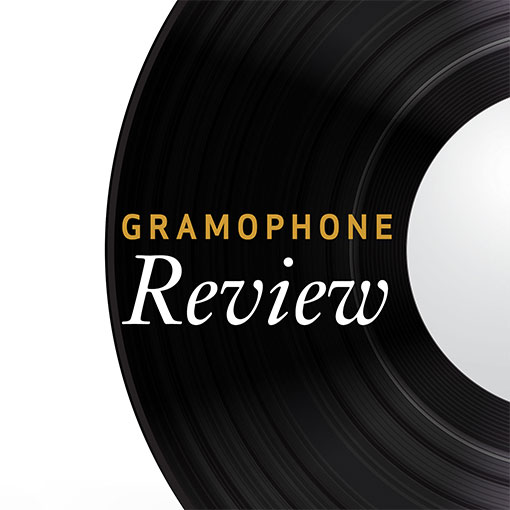Chávez Symphonies Nos 1-6
An ideal reissue of Eduardo Mata's 1981 cycle of the numbered [symphony] symphonies of Carlos Chavez (1899-1978), Mexico's leading exponent of the form
View record and artist detailsRecord and Artist Details
Composer or Director: Carlos (Antonio de Padua) Chávez (y Ramírez)
Label: Vox
Magazine Review Date: 4/2000
Media Format: CD or Download
Media Runtime: 134
Mastering:
ADD
Catalogue Number: CDX5061

Tracks:
| Composition | Artist Credit |
|---|---|
| Symphony No. 1, 'Sinfonía de Antígona' |
Carlos (Antonio de Padua) Chávez (y Ramírez), Composer
Carlos (Antonio de Padua) Chávez (y Ramírez), Composer Eduardo Mata, Conductor London Symphony Orchestra |
| Symphony No. 2, 'Sinfonía India' |
Carlos (Antonio de Padua) Chávez (y Ramírez), Composer
Carlos (Antonio de Padua) Chávez (y Ramírez), Composer Eduardo Mata, Conductor London Symphony Orchestra |
| Symphony No. 3 |
Carlos (Antonio de Padua) Chávez (y Ramírez), Composer
Carlos (Antonio de Padua) Chávez (y Ramírez), Composer Eduardo Mata, Conductor London Symphony Orchestra |
| Symphony No. 4, 'Sinfonía Romántica' |
Carlos (Antonio de Padua) Chávez (y Ramírez), Composer
Carlos (Antonio de Padua) Chávez (y Ramírez), Composer Eduardo Mata, Conductor London Symphony Orchestra |
| Symphony No. 5 |
Carlos (Antonio de Padua) Chávez (y Ramírez), Composer
Carlos (Antonio de Padua) Chávez (y Ramírez), Composer Eduardo Mata, Conductor London Symphony Orchestra |
| Symphony No. 6 |
Carlos (Antonio de Padua) Chávez (y Ramírez), Composer
Carlos (Antonio de Padua) Chávez (y Ramírez), Composer Eduardo Mata, Conductor London Symphony Orchestra |
Author: Guy Rickards
The three shorter, titled symphonies, Sinfonia de Antigona (1932-3), Sinfonia india (1935) and Sinfonia romantica (1952), haved fared the best of the six on disc over the years, particularly the Sinfonia india, with its wonderful Indian melodies and native percussion. Bernstein knew a good thing when he heard it, but his vibrant recording is hampered by indifferent balance. Mata's Dorian account is perfectly serviceable if not in Bernstein's league or the LSO's. It is also a makeweight for works by Orbon - annotator for part of Vox's reissue - and Villa-Lobos. Batiz for ASV couples it with Ponce's Violin Concerto and Revueltas's La noche de los mayas, but it's the best recorded of all.
Sinfonia de Antigona is a concentrated, atmospheric reworking (sounding not the least bit Mexican) of incidental music to Sophocles's play. Its despairing wind solos and granitic brass chords capture the essence of Greek tragedy as does Havergal Brian's Twelfth. There are curious resonances of the latter at the start of the Sinfonia romantica - written six years before the first performance of any Brian symphony - and Shostakovichian burlesque in the finale. Nos 3, 5 and 6 are very different works in scale, serious and abstract in tone. In the Third (1951), the winds and brass unusually often drive the music along (rather than the strings) in what is Chavez's most original design. The Fifth (1953, for strings) is one of the great unknown symphonies for strings (along with Maconchy's, Schuman's Fifth and Hartmann's Fourth). The Sixth (1961) is the finest of all, its concluding passacaglia and fugue a tremendous achievement.
Overall, these discs score over Batiz's despite the latter's superior sound quality and Nos 1 and 4's attractive coupling of three excel- lent Revueltas scores. Nos 3, 5 and 6 are available only in this set, the composer's own having long been deleted. (Nos 1, 2 and 4 are available from Everest in North America.) Mata's tempos are all spot on, though generally more measured than Chavez's. The performances are excellent although No 5 clearly taxed the LSO strings at times (the composer's own electrifying account is not likely to be bettered). A set to treasure.'
Sinfonia de Antigona is a concentrated, atmospheric reworking (sounding not the least bit Mexican) of incidental music to Sophocles's play. Its despairing wind solos and granitic brass chords capture the essence of Greek tragedy as does Havergal Brian's Twelfth. There are curious resonances of the latter at the start of the Sinfonia romantica - written six years before the first performance of any Brian symphony - and Shostakovichian burlesque in the finale. Nos 3, 5 and 6 are very different works in scale, serious and abstract in tone. In the Third (1951), the winds and brass unusually often drive the music along (rather than the strings) in what is Chavez's most original design. The Fifth (1953, for strings) is one of the great unknown symphonies for strings (along with Maconchy's, Schuman's Fifth and Hartmann's Fourth). The Sixth (1961) is the finest of all, its concluding passacaglia and fugue a tremendous achievement.
Overall, these discs score over Batiz's despite the latter's superior sound quality and Nos 1 and 4's attractive coupling of three excel- lent Revueltas scores. Nos 3, 5 and 6 are available only in this set, the composer's own having long been deleted. (Nos 1, 2 and 4 are available from Everest in North America.) Mata's tempos are all spot on, though generally more measured than Chavez's. The performances are excellent although No 5 clearly taxed the LSO strings at times (the composer's own electrifying account is not likely to be bettered). A set to treasure.'
Discover the world's largest classical music catalogue with Presto Music.

Gramophone Digital Club
- Digital Edition
- Digital Archive
- Reviews Database
- Full website access
From £8.75 / month
Subscribe
Gramophone Full Club
- Print Edition
- Digital Edition
- Digital Archive
- Reviews Database
- Full website access
From £11.00 / month
Subscribe
If you are a library, university or other organisation that would be interested in an institutional subscription to Gramophone please click here for further information.





